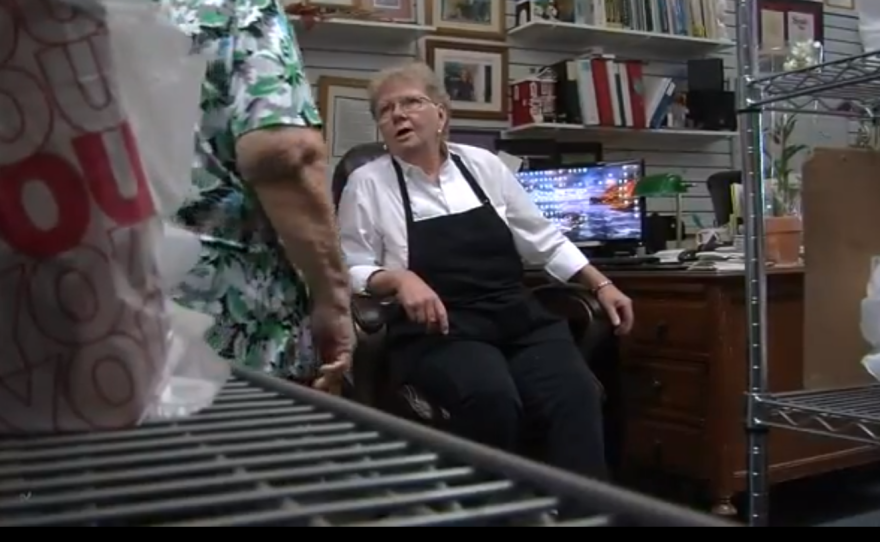It’s an hour before showtime at the Special Delivery San Diego food pantry in Mission Hills.
Clients are lined up already outside the door.
Inside, volunteers are going through their last-minute preparations.
While some volunteers load cases of food, Lauren Ponder sorts through the boxes of donated produce.
There are tangerines, green beans and all sorts of other stuff.
"It’s unpredictable what the grocery stores will give you, so sometimes there’s a lot of mush and things, too," Ponder said. "So we gotta, like, take that out, send it out to the trash, and then, just make it like a grocery store for the homeless people."
The pantry’s shelves are stocked with canned goods. There’s a refrigerator/freezer filled with dairy products and frozen meat. And there are trash bags crammed with loaves of bread.
All of the produce and most of the staple foods are donated by big chains like Trader Joe’s and Sprouts. One store alone, Albertsons, donated more than $1.2 million of food to the pantry last year.

Pantry founder Ruth Henricks points out one section of the pantry with special foods that had to be purchased.
“These are foods that are non-perishable and are available for the diabetics," she said. "So we have low-sodium V8, we have whole grain cereal, we have brown rice, whole grain pastas, that type of thing.”
Henricks started the diabetic pantry just a few months ago. It’s one of only four in the United States.
Henricks has owned and operated the Huddle Restaurant for more than 25 years. She opened the pantry next to her restaurant five years ago to help San Diegans who need food assistance.
Over the years, she noticed many of her clients were overweight or obese. Those are two of the risk factors for diabetes.
Recently, Henricks asked clients if they were diabetic.
“And we found 2 out of 10 who were coming to shop at our pantry had diabetes,” she said.
Over the last 30 years, the number of Americans with diabetes has more than tripled. The Centers for Disease Control and Prevention estimated there were 20.9 million diabetics nationwide in 2011.
That includes more than 237,000 people in San Diego County.
Research shows the poor have the highest risk of diabetes.
Mary Redd, who uses the pantry, was diagnosed with diabetes in 1998.
She said it’s tough to constantly watch what you eat.
“Because a lot of time you have to balance and weigh, and certain things you can’t eat and certain things you can," Redd said. "I don’t like a lot of starchy foods, a lot of sweets, a lot of juices.”
The food from the diabetic pantry is reserved for people like Redd. All of it is low-calorie, low-sodium, and sugar-free.
But Henricks believes handing out healthy foods to people with diabetes is only the first step.
“Now what do I do with it? How do I prepare this? And so we need to have somebody show them," she said. "And how do you put together good, nutritious meals that are still fairly inexpensive? Vegetarian chili, beans, tomatoes are great for people. And so we’re concentrating on that. And so, it’s also making sure that we have menus available for the people as they come in and shop.”
Henricks plans to start a monthly cooking and nutrition class for her diabetic clients.
Rosemary Jaworski is one of the volunteers who’s helping Henricks with the diabetic pantry. She’s a longtime nurse and a diabetic herself.
Jaworski said it’s not easy for anyone to change their habits, let alone people with diabetes.
“It takes time to make changes and to forgive ourselves when we can’t make those changes rapidly," Jaworski said. "It takes time. And if it’s just building your relationship with quinoa for the next couple of months and expanding your palate, I think that we’ve done something.”
About 450 people visit the pantry once a month. Of those, 30 clients have registered for the diabetic pantry.
They’re being encouraged to spread the word.






